Area of Trinity Church (Manhattan)
























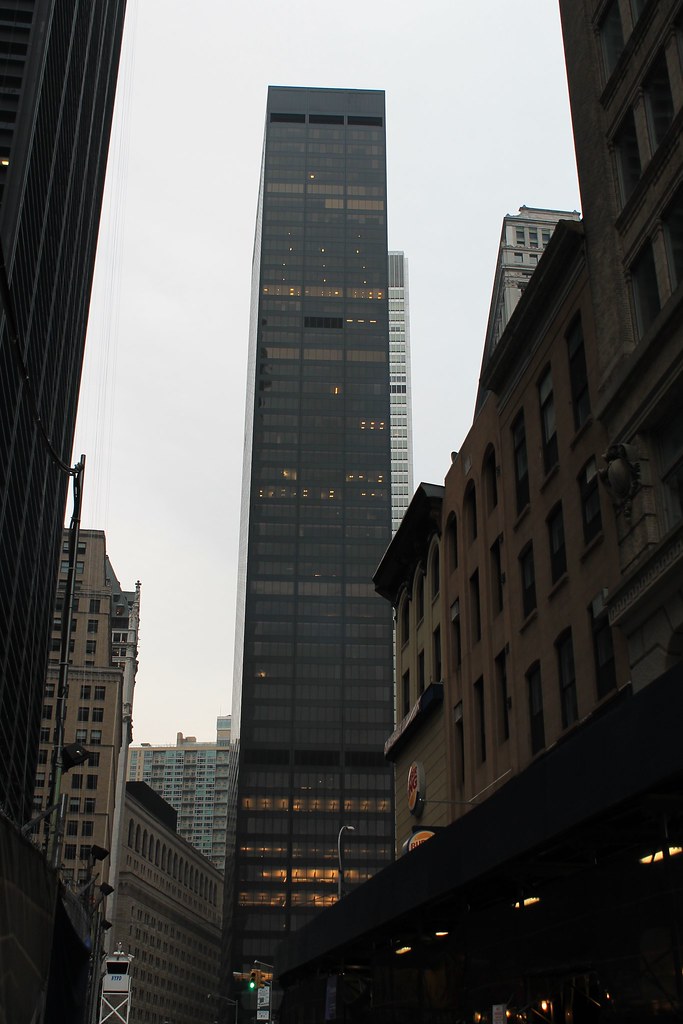
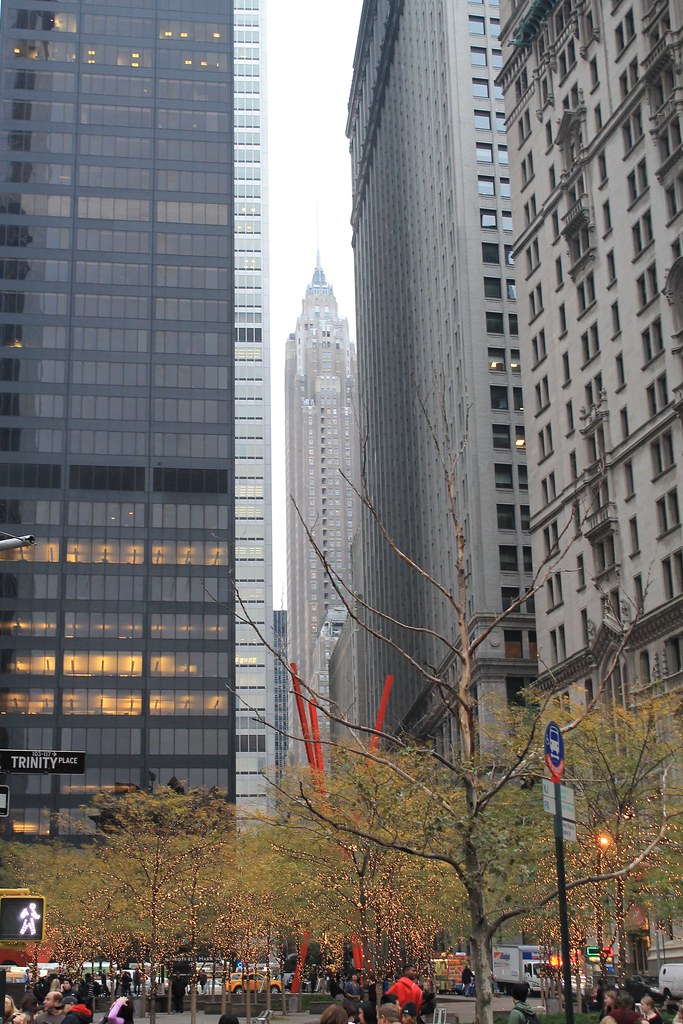
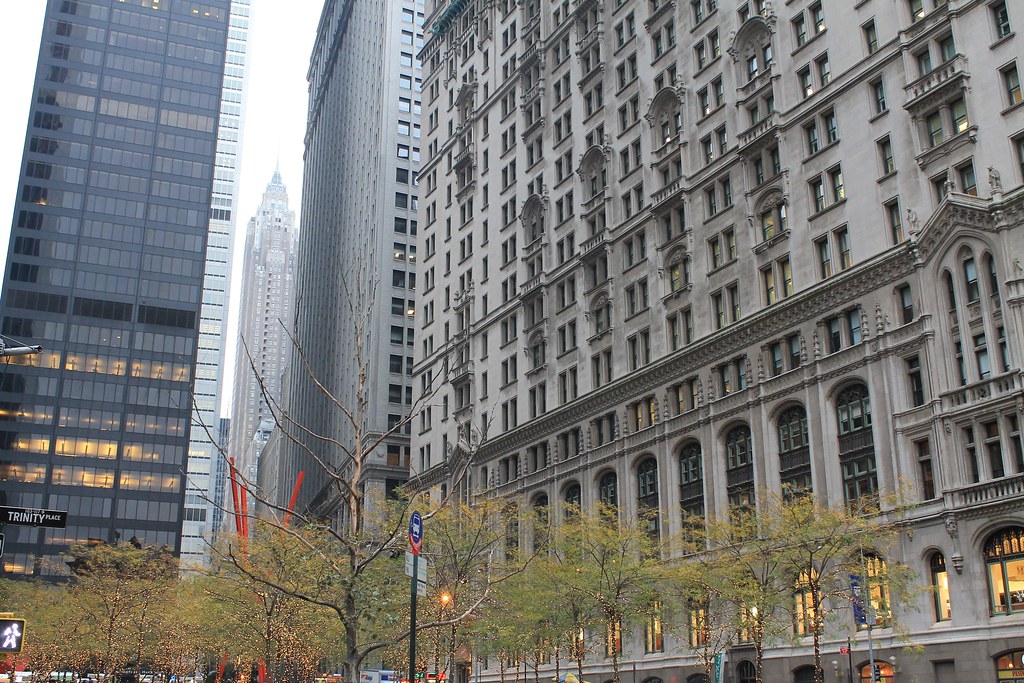
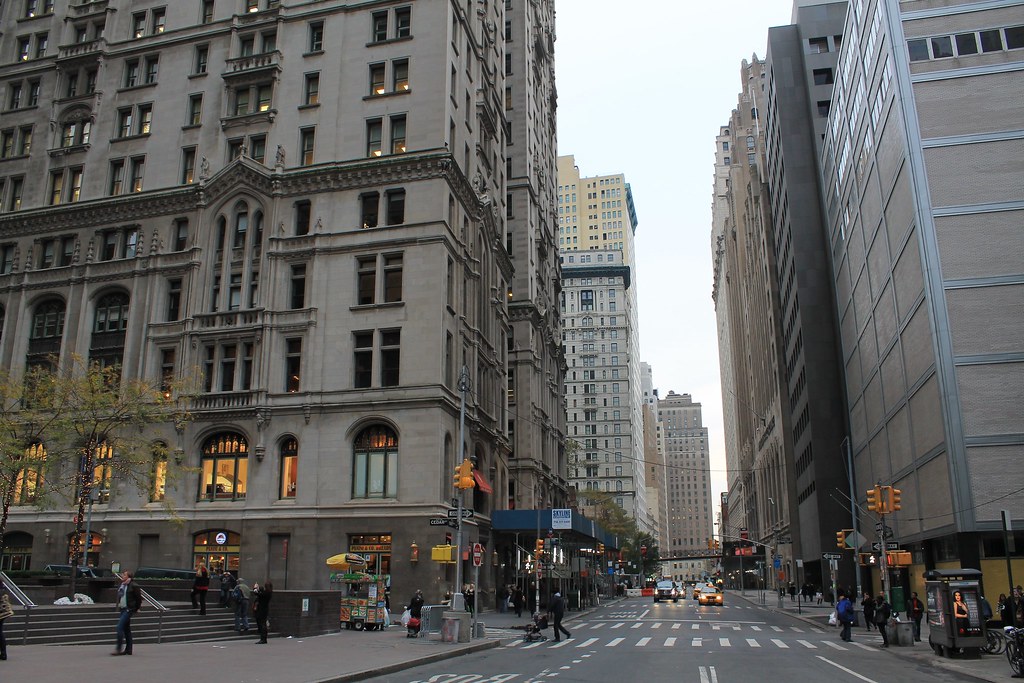
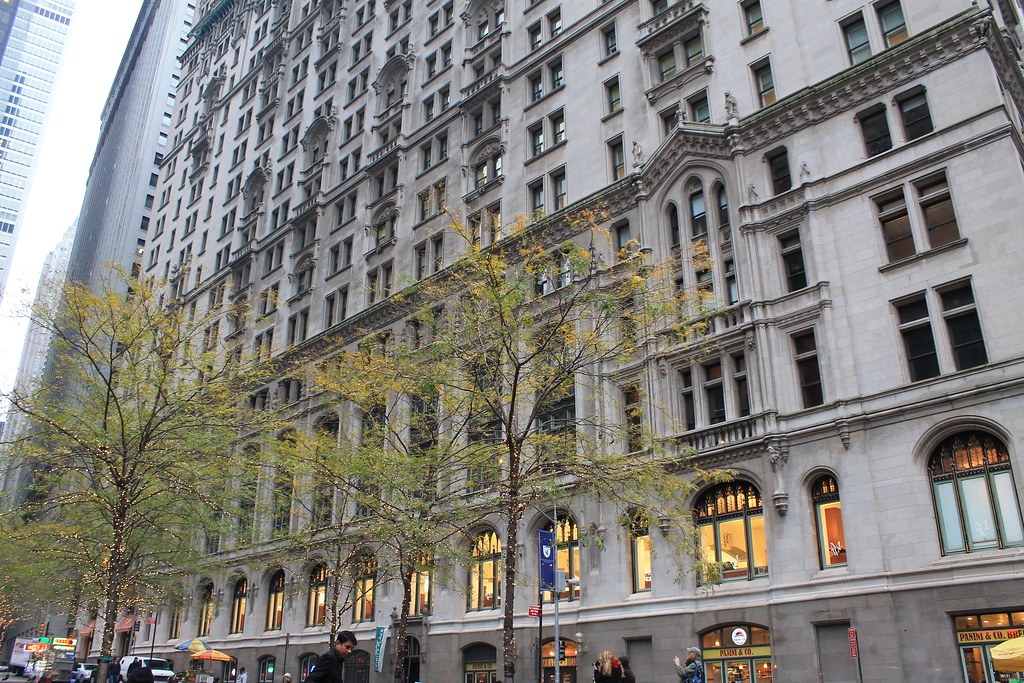
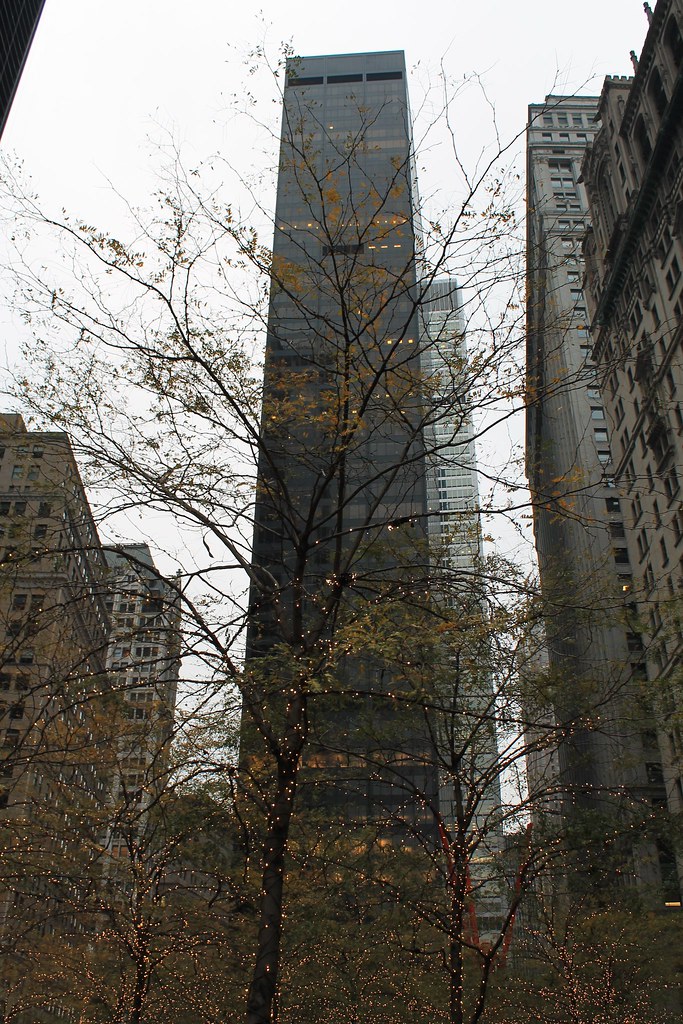
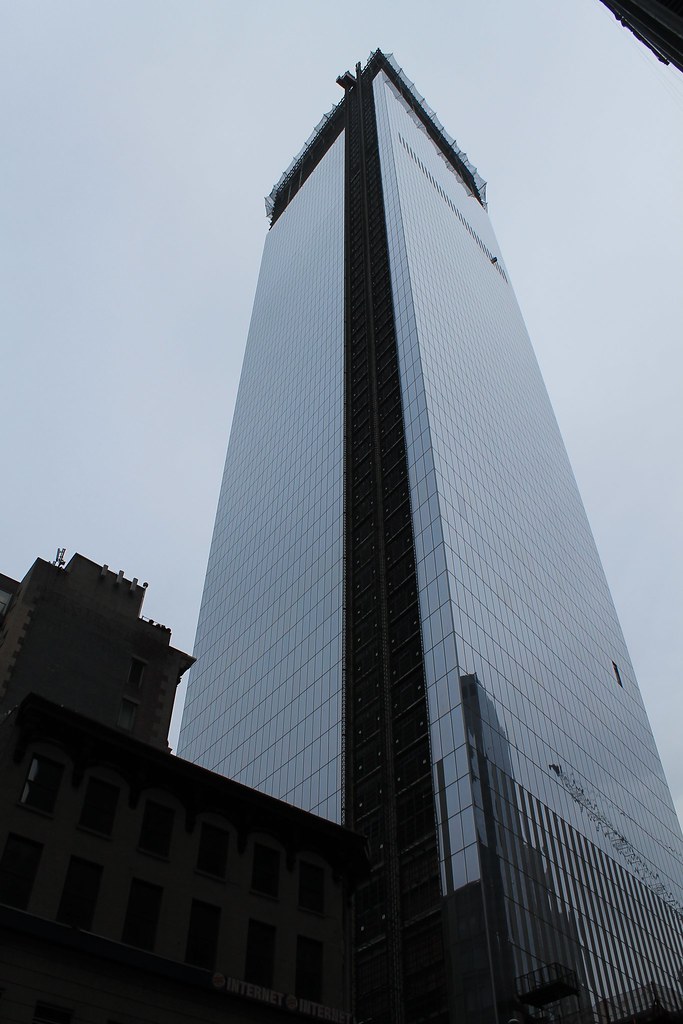
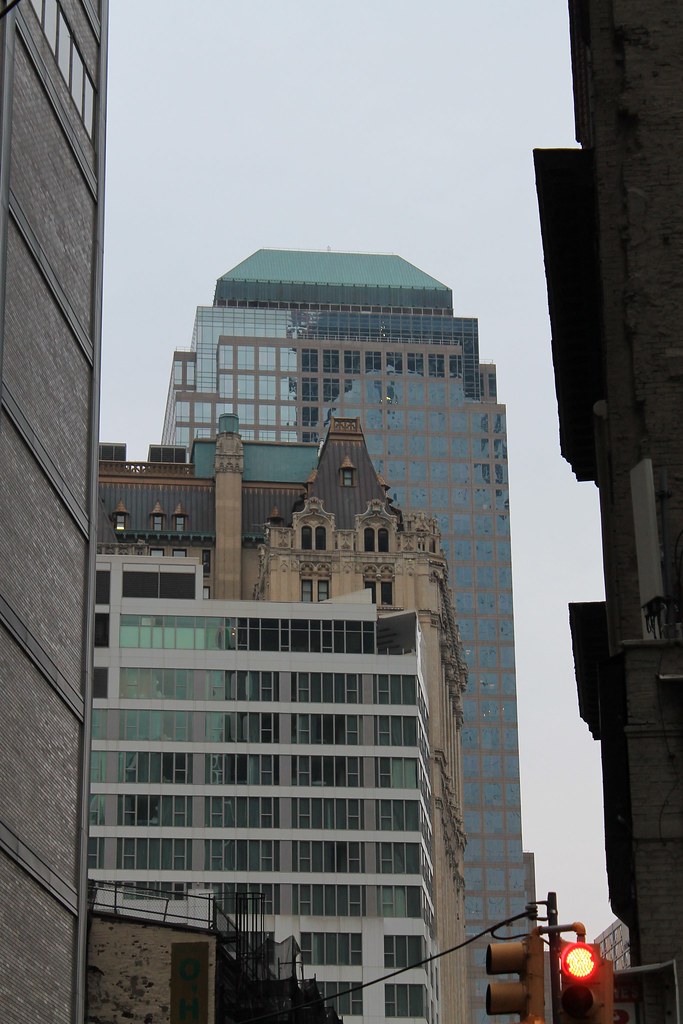
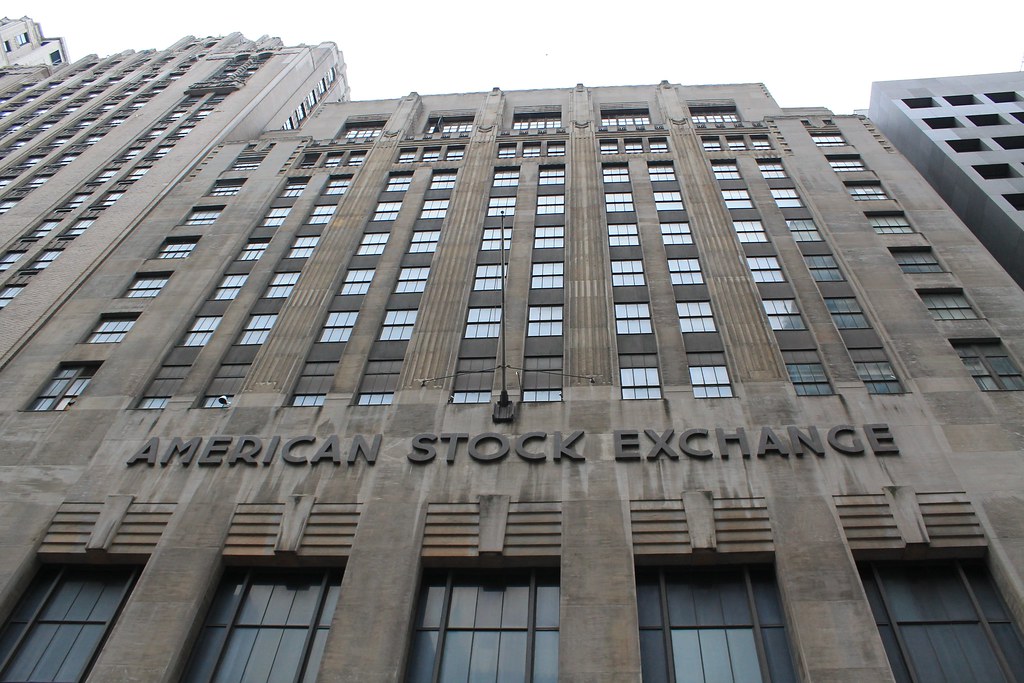
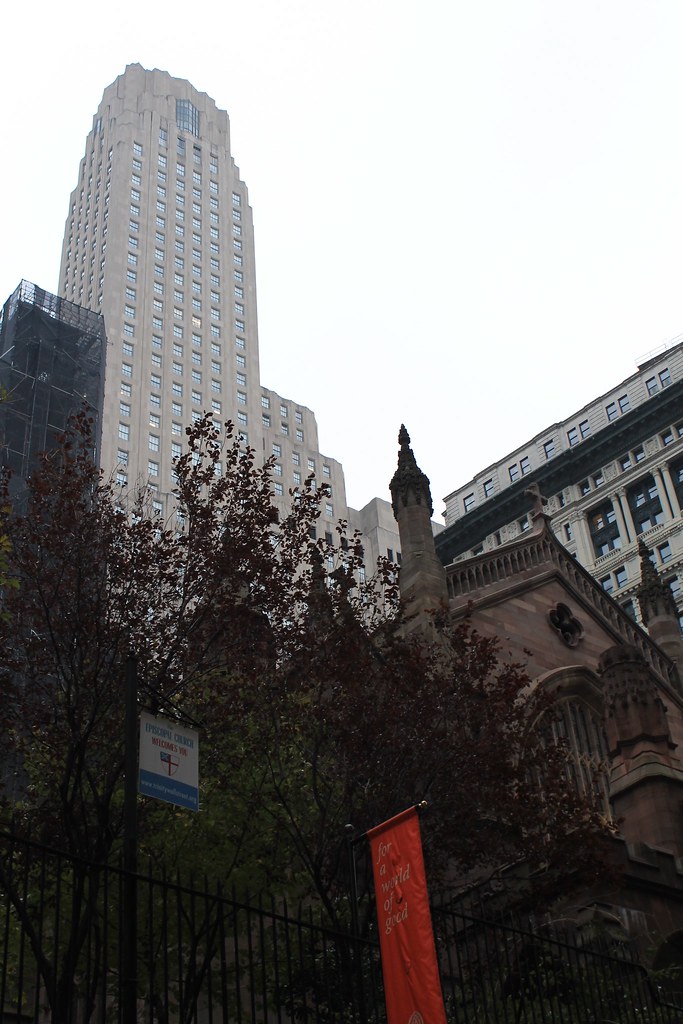
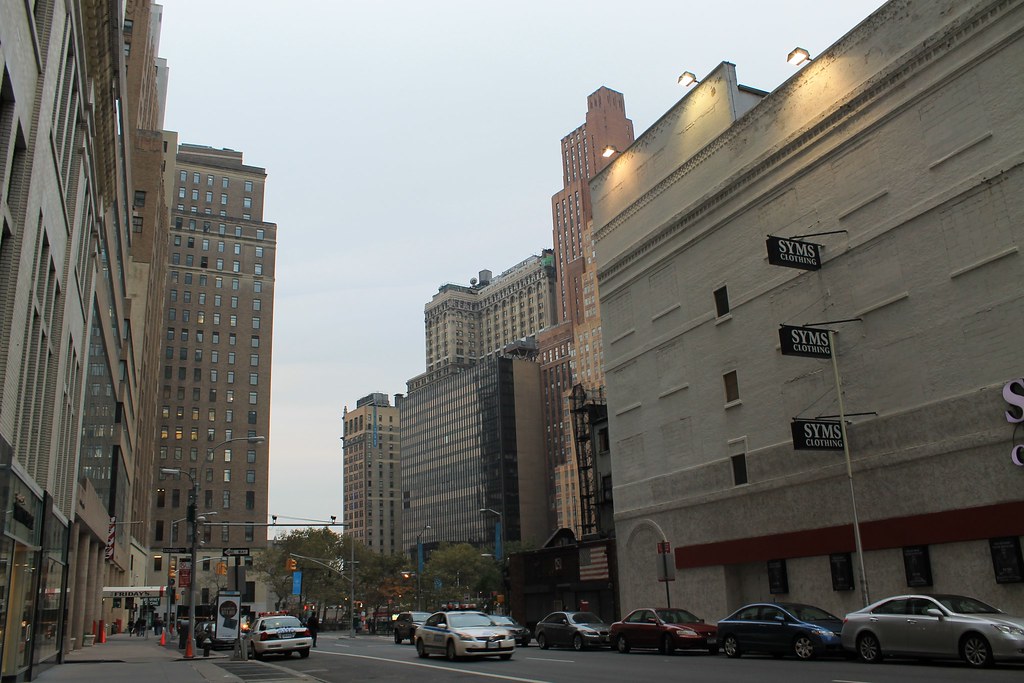
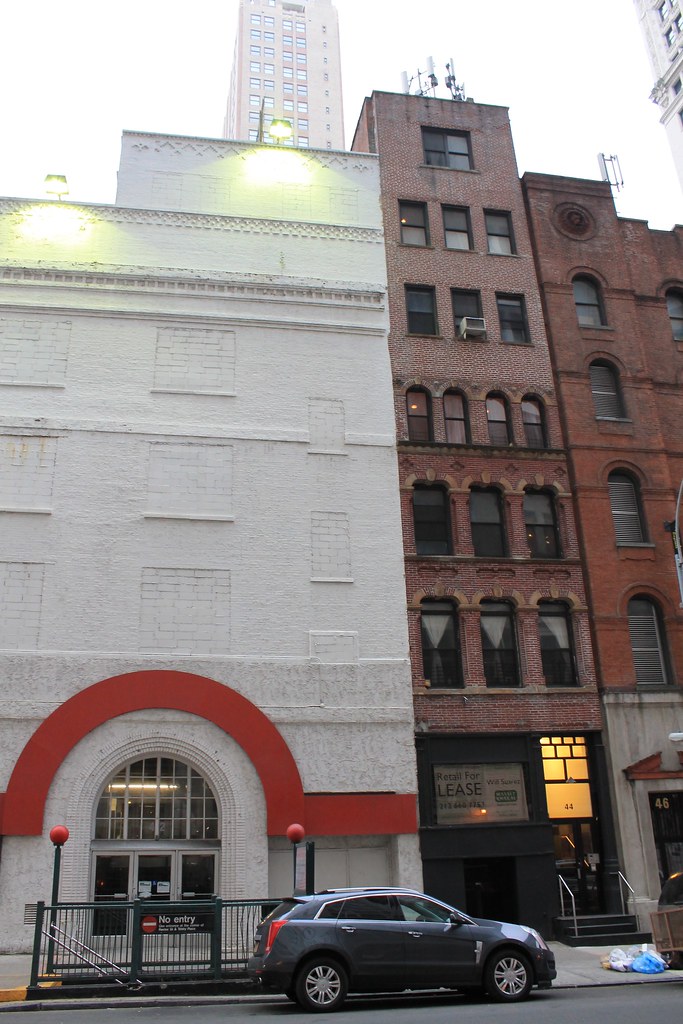
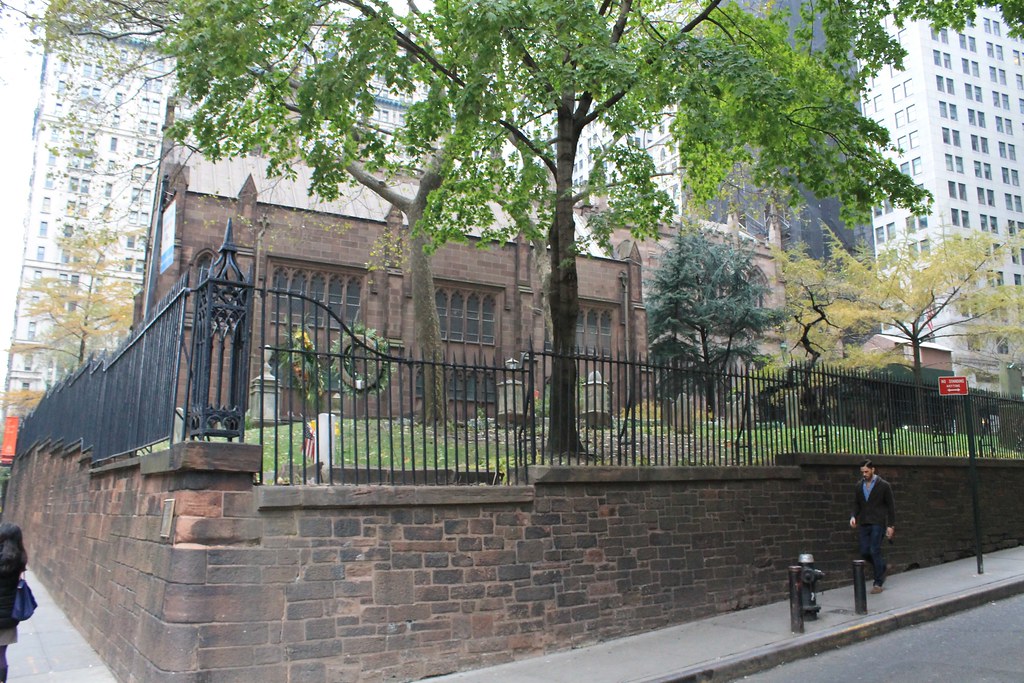
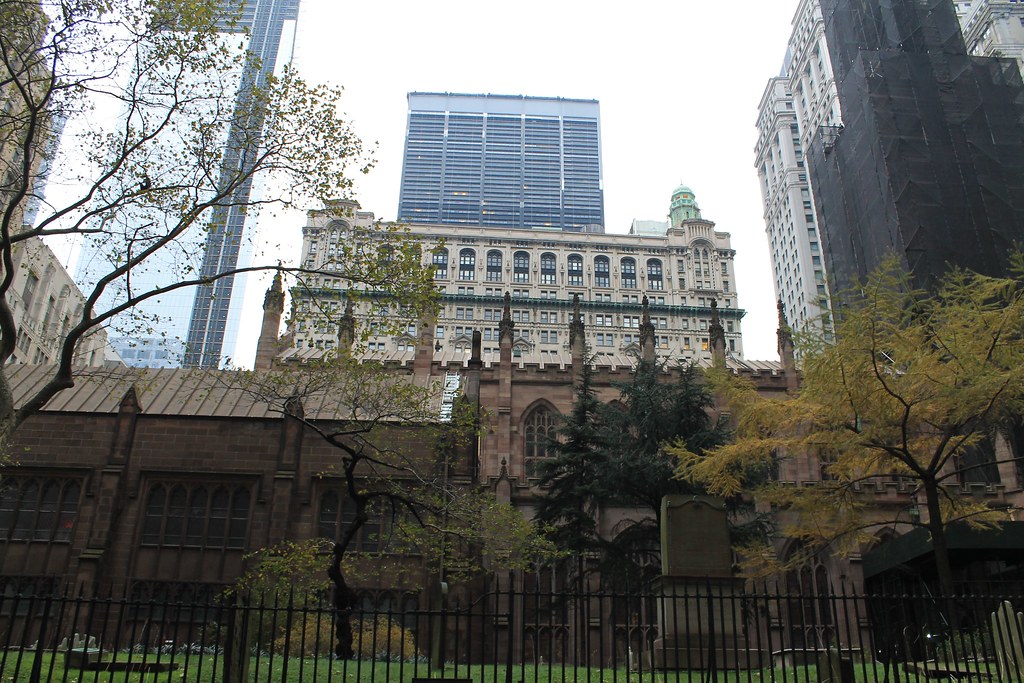
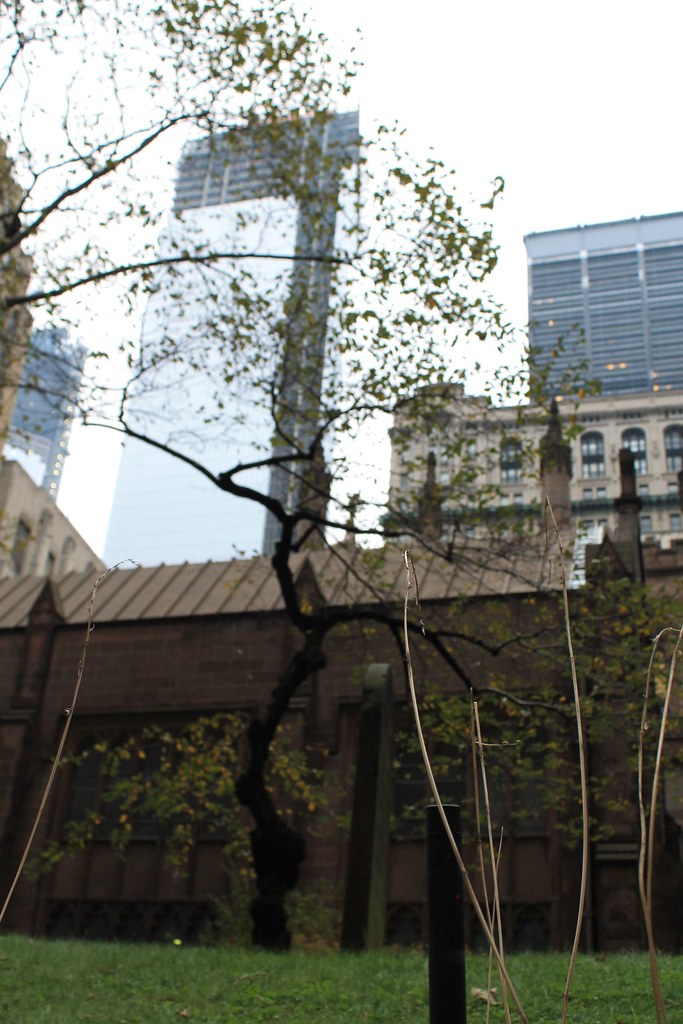
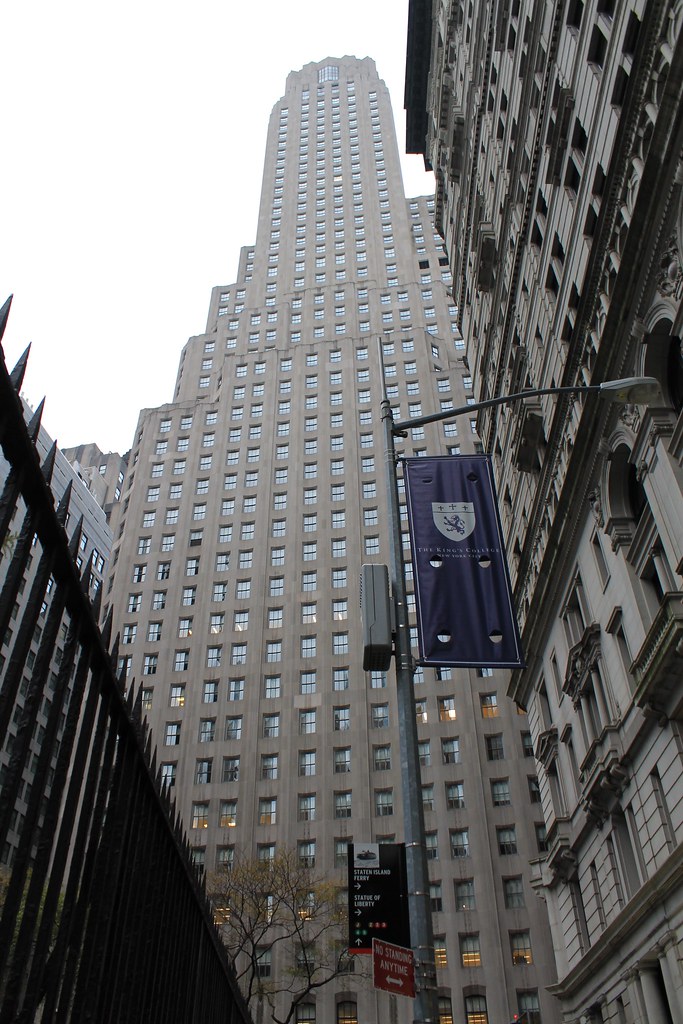
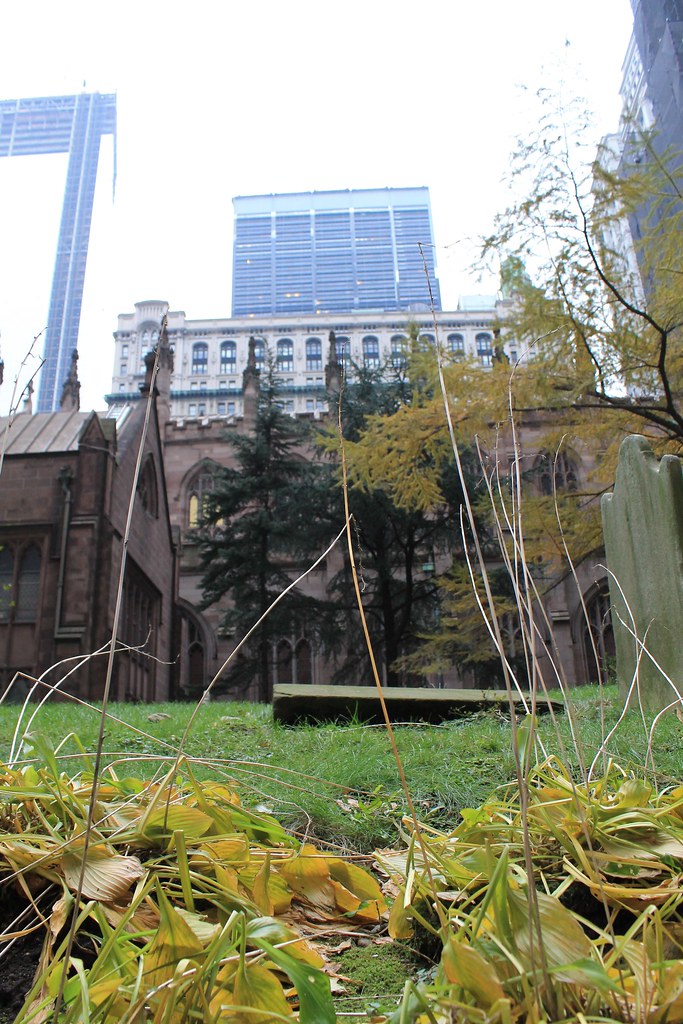
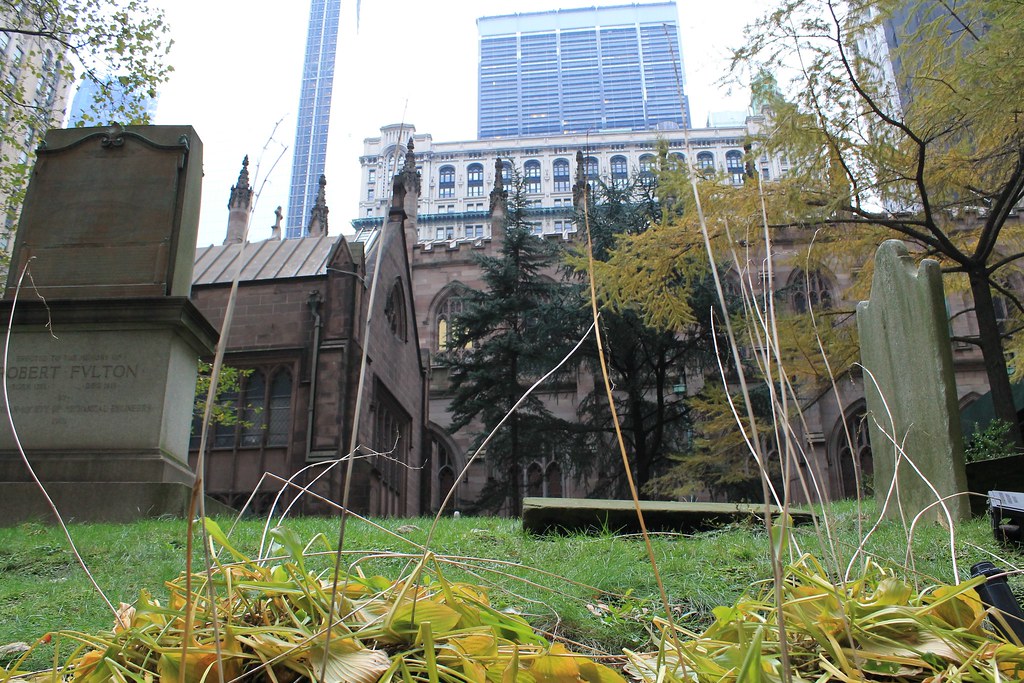
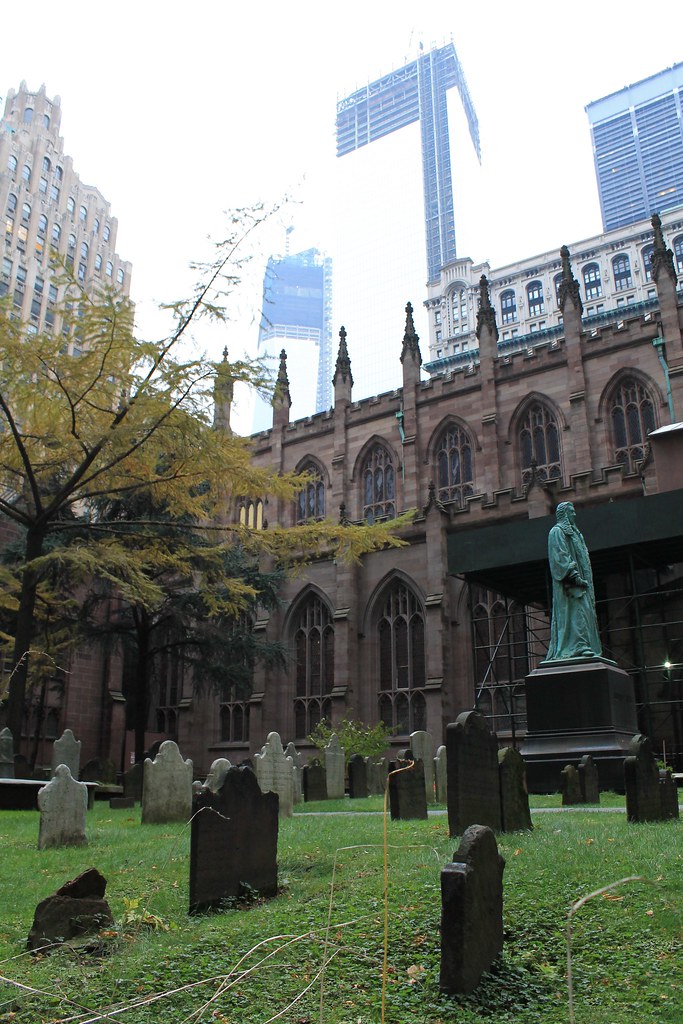
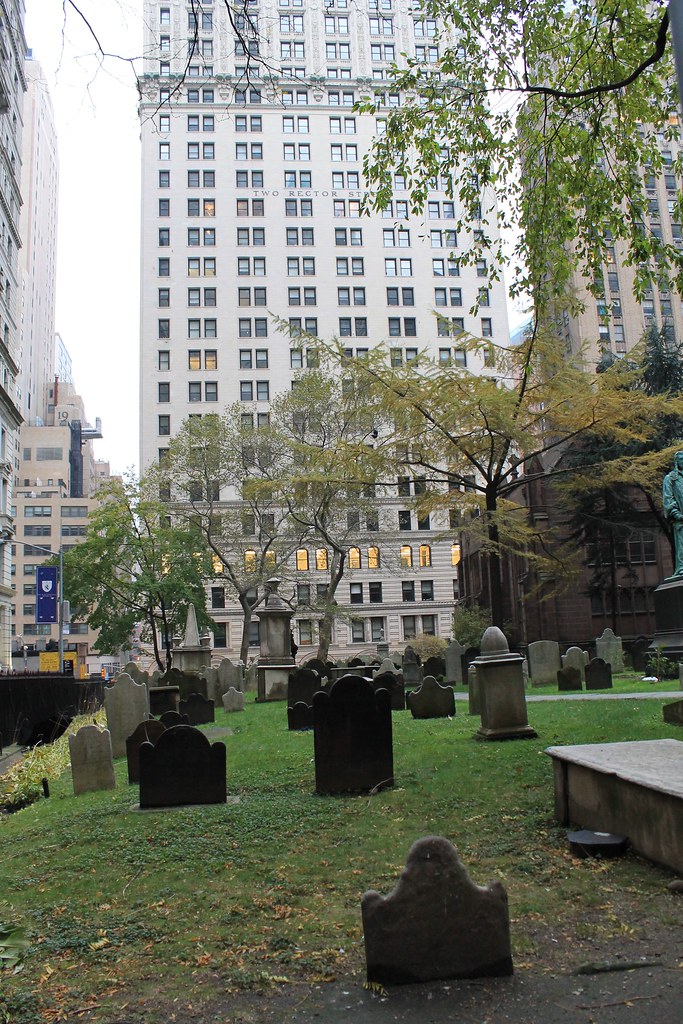
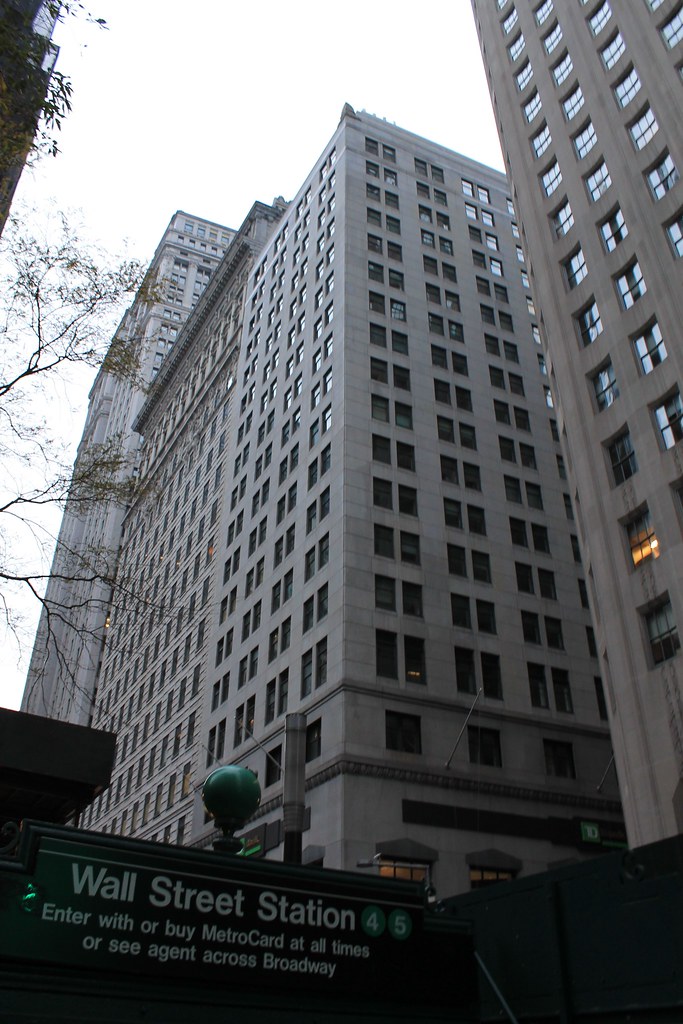
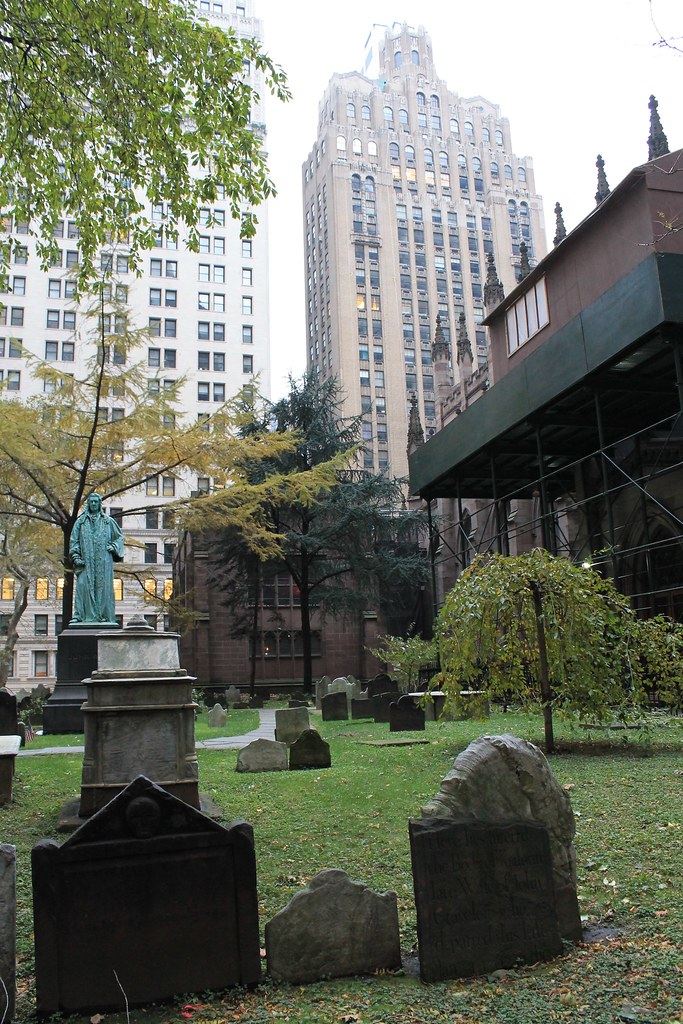
In 1696, Governor Benjamin Fletcher approved the purchase of land in Lower Manhattan by the Church of England community for construction of a new church. The parish received its charter from King William III on May 6, 1697. Its land grant specified an annual rent of sixty bushels of wheat.[3] The first rector was William Vesey (for whom nearby Vesey Street is named), a protege of Increase Mather, who served for 49 years until his death in 1746.
First Trinity Church
The first Trinity Church building, a modest rectangular structure with a gambrel roof and small porch, was constructed in 1698. According to historical records, Captain William Kidd lent the runner and tackle from his ship for hoisting the stones.
Queen Anne of England increased the parish's land holdings to 215 acres (870,000 m2) in 1705. Later, in 1709, William Huddleston founded Trinity School as the Charity School of the church, and classes were originally held in the steeple of the church. In 1754, King's College (now Columbia University) was chartered by King George II of Great Britain and instruction began with eight students in a school building near the church.
During the American Revolutionary War the city became the British military and political base of operations in North America, following the departure of General George Washington and the Continental Army shortly after Battle of Long Island and subsequent local defeats. Under British occupation clergy were required to be Loyalists, while the parishioners included some members of the revolutionary New York Provincial Congress, as well as the First and Second Continental Congresses.
The church was destroyed in a fire, which started in the Fighting Cocks Tavern destroyed nearly 500 buildings and houses and left thousands of New Yorkers homeless. Six days later, most of the city's volunteer firemen followed General Washington north.
The Rev. Samuel Provoost, was appointed Rector of Trinity (1784-1800) in 1784 and the New York State Legislature ratified the charter of Trinity Church, deleting the provision that asserted its loyalty to the King of England. Whig patriots were appointed as vestrymen. In 1787, Provoost was consecrated as the first Bishop of the newly formed Diocese of New York. Following his 1789 inauguration at Federal Hall, George Washington attended Thanksgiving service, presided over by Bishop Provoost, at St. Paul's Chapel, a chapel of the Parish of Trinity Church. He continued to attend services there until the second Trinity Church was finished in 1790. St. Paul's Chapel is currently part of the Parish of Trinity Church and is the oldest public building in continuous use in New York City.
Construction on the second Trinity Church building began in 1788; it was consecrated in 1790. The structure was torn down after being weakened by severe snows during the winter of 1838–39.
[edit]Third Trinity Church
The third and current Trinity Church was finished in 1846 and at the time of its completion its 281-foot (86 m) spire and cross was the highest point in New York until being surpassed in 1890 by the New York World Building.
In 1843, Trinity Church's expanding parish was divided due to the burgeoning cityscape and to better serve the needs of its parishioners. The newly formed parish would build Grace Church, to the north on Broadway at 10th street, while the original parish would re-build Trinity Church, the structure that stands today. Both Grace and Trinity Churches were completed and consecrated in 1846.
In 1876-1877 a reredos and altar was erected in memory of William Backhouse Astor, Sr., to the designs of architect Frederick Clarke Withers.
Architectural historians consider the present, 1846 Trinity Church building, designed by architect Richard Upjohn, a classic example of Gothic Revival architecture. In 1976 the United States Department of the Interior designated Trinity Church a National Historic Landmark because of its architectural significance and its place within the history of New York City.[2][6][7]
When the Episcopal Bishop of New York consecrated Trinity Church on Ascension Day May 1, 1846, its soaring Neo-Gothic spire, surmounted by a gilded cross, dominated the skyline of lower Manhattan. Trinity was a welcoming beacon for ships sailing into New York Harbor.
On July 9, 1976 Queen Elizabeth II of the United Kingdom visited Trinity Church. Vestrymen presented her with a symbolic "back rent" of 279 peppercorns. Thereby, in 1697, King William III gave Trinity Church a charter that called for the parish to pay an annual rent of one peppercorn to the crown. Since 1993, Trinity Church has hosted the graduation ceremonies of the High School of Economics and Finance. The school is located on Trinity Place, a few blocks away from the church.
Tree Sculpture at Trinity Church, made out of giant sycamore destroyed in 9-11
During the September 11, 2001 attacks, as the 1st Tower collapsed, people took refuge from the massive debris cloud inside the church. Falling wreckage from the collapsing tower knocked over a giant sycamore tree that had stood for nearly a century in the churchyard of St. Paul's Chapel, which is part of Trinity Church's parish and is located several blocks north of Trinity Church. Sculptor Steve Tobin used its roots as the base for a bronze sculpture that stands next to the church today.
[edit]Cemetery
Trinity Church Cemetery
There are three burial grounds closely associated with Trinity Church. The first Trinity Churchyard, at Wall Street and Broadway, in which Alexander Hamilton, William Bradford, Franklin Wharton, Robert Fulton, Captain James Lawrence and Albert Gallatin are buried. The second is Trinity Church Cemetery and Mausoleum on Riverside Drive at 155th Street, formerly the location of John James Audubon's estate, in which are interred John James Audubon, Alfred Tennyson Dickens, John Jacob Astor, and Clement Clarke Moore. It is the only active cemetery remaining in the borough of Manhattan. The third is the Churchyard of St. Paul's Chapel.
Comments
Post a Comment